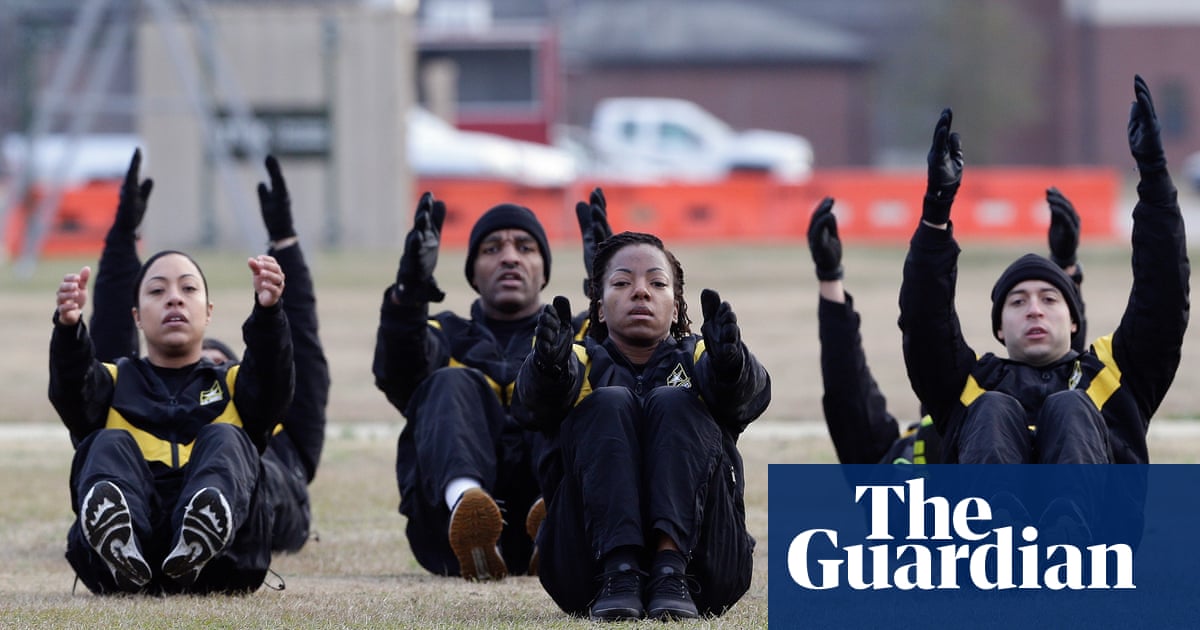The US army unveiled plans on Monday to require a fitness test with identical physical standards for men and women in combat positions after the defense secretary,Pete Hegseth, ordered the elimination of gender-based fitness requirements in frontline roles.
The revamped army fitness test, which replaces the combat fitness test, will be “sex-neutral” and force female soldiers in 21 combat specialties to meet the same benchmarks as men – a change expected to drastically cut the number of women qualifying for these positions.
“The five-event AFT is designed to enhance Soldier fitness, improve warfighting readiness, and increase the lethality of the force,” the army said in a press release.
Gone is the “standing power throw” or “ball yeet”, replaced with a streamlined assessment of deadlifts, push-ups, planks, a two-mile run and a sprint-drag-carry exercise. For younger women, the standards jump significantly – deadlifting 140lb instead of 120, and shaving nearly 90 seconds off required run times.
The new policy appears to contradict findings froma 2017 studyof US army soldiers that concluded “gaps in cardiorespiratory and muscular performances between men and women should be addressed through targeted physical training programs that aim to minimize physiological differences” rather than applying identical standards.
A2022 Rand Corporation studyalso found that women and older service members were failing the previous fitness test “at significantly higher rates than men and younger troops”, which raises questions about the feasibility of the new standardized requirements.
Combat soldiers must now score “a minimum of 60 points per event and an overall minimum score of 350” under the sex-neutral standards, according to the army’s press release. Active-duty troops have until January 2026 to meet requirements, while national guard and reserve members have until June 2026.
Hegseth has previously said that he does not think women should be allowed to serve in combat roles, though he later moderated his stance. The former Fox News host wrote in a recent book that “women cannot physically meet the same standards as men” and that mothers were needed “but not in the military, especially in combat units”.
Soldiers who fail to meet the new standards twice consecutively face potential removal from the army or,according toSgt Maj Christopher Mullinax, would be required to transfer to non-combat roles, which will continue using sex- and age-based scoring.
The army will begin rolling out the changes on 1 June, with full implementation guidelines expected in May.
